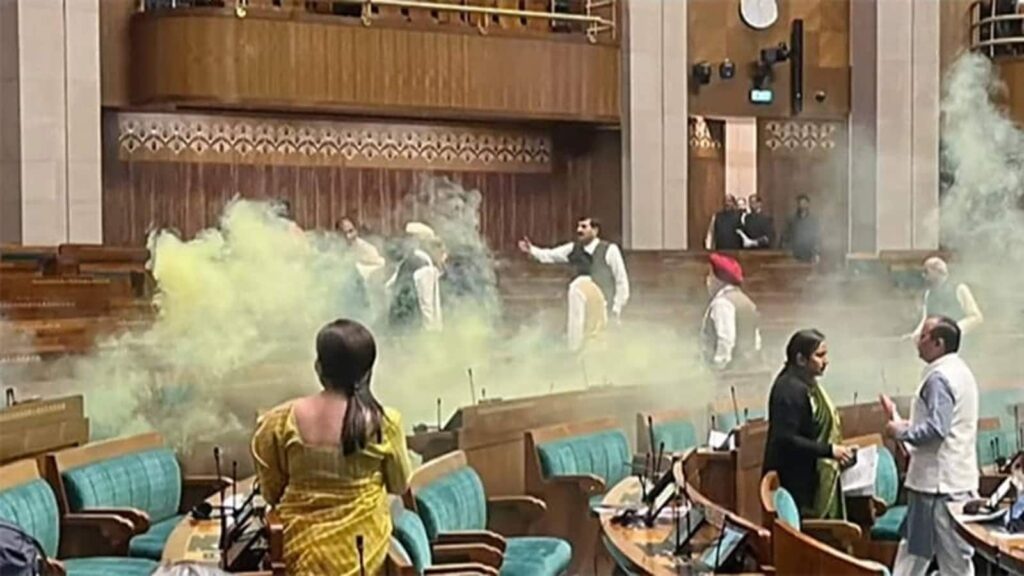The security breach at Parliament on Wednesday is a grave matter that calls for an in-depth investigation as well as an overhaul of the recently inaugurated complex’s security umbrella. Thankfully, the breach was limited to the intruders shouting slogans and hurling canisters with coloured smoke, and four out of five members so far accused of involvement in the plot to stage the spectacle, have been apprehended; it could have been much worse. However, questions remain about how the group, reportedly fans of freedom fighter Bhagat Singh who bonded on social media, could go under the intelligence radar and plan, evade security checks, enter the House and execute the operation on the 22nd anniversary of the 2001 terrorist attack on Parliament. The timing of the operation and the ease with which the group executed it, should embarrass the security establishment. Those arrested have been charged under the UAPA and security officials have been suspended. But the penalties have to move higher up the food chain given the magnitude of the incident, the nightmarish what-might-have-been scenario, and the systemic failures (that multiple checks failed to detect a smoke canister points to a systemic issue). A time-bound investigation must flesh out the details of the operation so that there is no scope for conspiracy theories. The government has to address the Opposition’s concerns while the latter must desist from politicising the security failure, although merely raising questions or asking for an explanation cannot and should not be construed as such.
There are two larger issues that Parliament and government authorities should keep in mind — any overhaul of security within the Parliament premises should not wall out ordinary citizens from the institution, which is arguably the greatest symbol of Indian democracy. As has been the norm in most democracies, including India, the endeavour has to be to take the institution closer to the people, inviting citizens to see the deliberative process that their representatives engage in. More personnel and use of technology for bookings and security clearances can help in visitor management, but the House of People should continue to be welcoming of citizens, especially children.
Two, while it may be premature to speculate on the motives of the intruders, initial reports suggest that they are young people drawn from the lower middle classes in small towns, disillusioned with a variety of factors including the lack of jobs commensurate with their education. It may well be that their disruptive protest was orchestrated, but the government should be awake to the possibility of a restive youth population, its electoral implications, and its potential to curtail India’s demographic dividend.
Continue reading with HT Premium Subscription
Daily E Paper I Premium Articles I Brunch E Magazine I Daily Infographics


